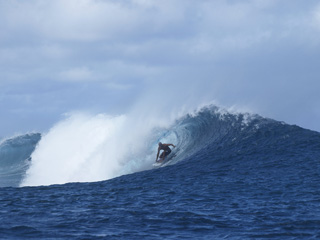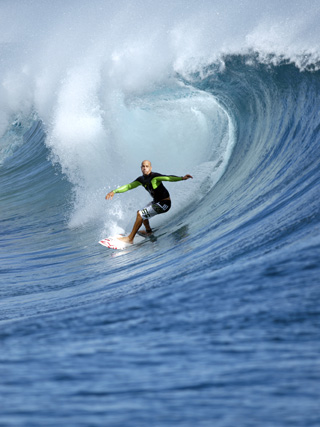Sound waves, light waves, radio waves, microwaves, ocean waves, stadium waves, earthquake waves, slinky waves . . . waves are everywhere! But what are they?
When we see a wave, it often appears that something is moving from one place to another. In reality, we are seeing a disturbance moving through a solid, liquid, or gas. Particles of the solid, liquid, or gas may move, but the particles return to their original position after the wave passes. In a stadium wave, the fans raise their hands, then put their hands down. After the wave passes, everyone is still where they were before the wave arrived. The only thing that actually moved from one place to another was the energy of the wave.

Some waves, such as radio waves, light waves, and microwaves do not involve a solid, liquid, or gas at all. These waves consist of an electric field and a magnetic field, and are called electromagnetic waves.
Ocean waves are produced by interaction between wind and the surface of the ocean. The size of ocean waves depends upon the strength of the wind, how long the wind blows, and the distance over which the wind blows. The distance over which the wind blows is called the wind’s “fetch.”

The Ultimate Wave Tahiti Family Activity Guide has instructions for making your own “portable wave.” For more information about different types of waves, wave features, and the physics of surfing, see The Ultimate Wave Tahiti Educator’s Guide: PDF >>
Comments are closed.